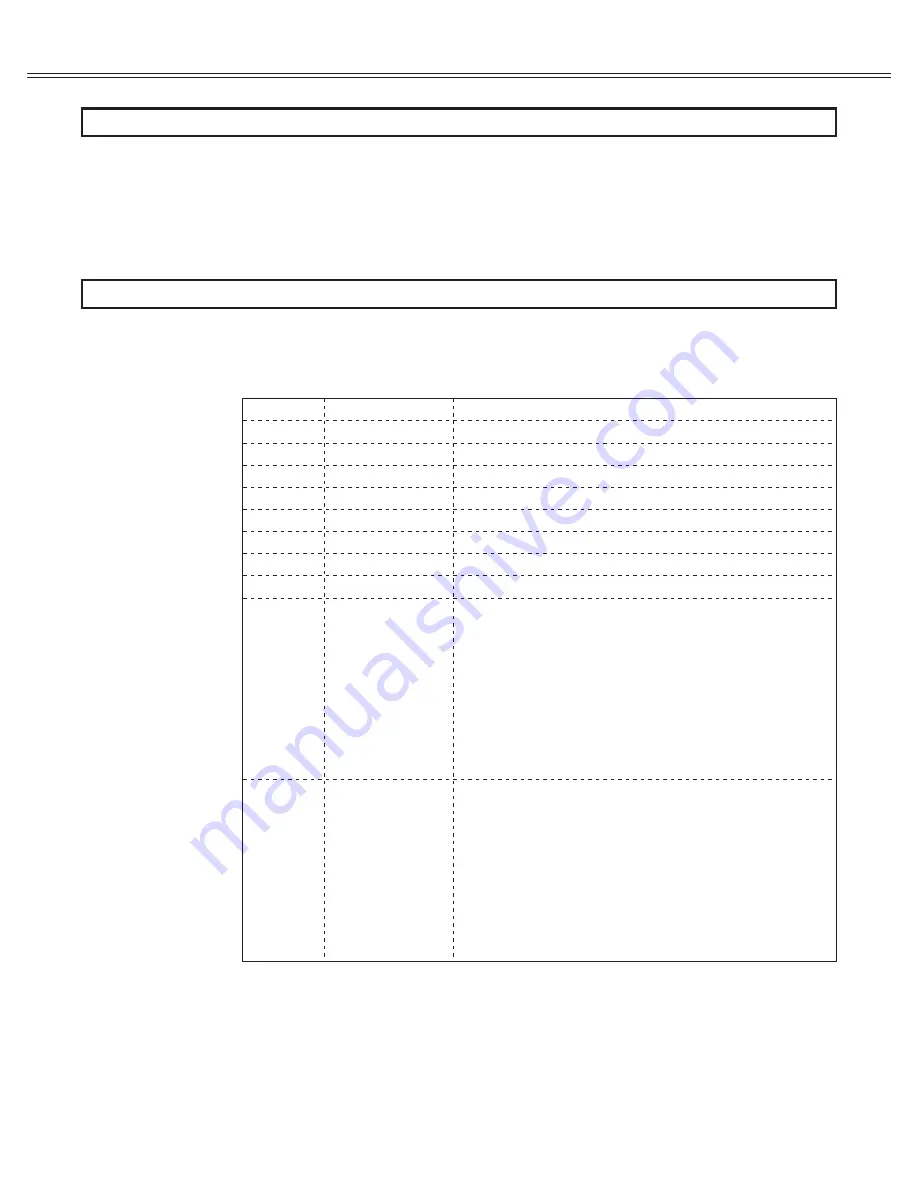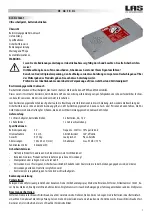
4.1
Modbus Communications
General
The Remote RTD Module uses an industry standard RS-485 port, communicating as a
Modbus RTU slave. The Remote RTD Module has the following communications
features;
•
RS-485 port.
•
19200 bits per second communications rate.
•
8 data bits, 1 stop bit, no parity.
•
Modbus RTU slave, addresses 16 to 23.
4.2
Modbus Input Registers
General
The Benshaw Remote RTD Module has a number of Modbus input registers. These
registers are used to read the temperatures measured by the eight RTDs.
Registers
The following table lists the Modbus input registers;
Register
Description
Values
30001
RTD 1
0 to 200 - Temperature in degrees Celsius
30002
RTD 2
0 to 200 - Temperature in degrees Celsius
30003
RTD 3
0 to 200 - Temperature in degrees Celsius
30004
RTD 4
0 to 200 - Temperature in degrees Celsius
30005
RTD 5
0 to 200 - Temperature in degrees Celsius
30006
RTD 6
0 to 200 - Temperature in degrees Celsius
30007
RTD 7
0 to 200 - Temperature in degrees Celsius
30008
RTD 8
0 to 200 - Temperature in degrees Celsius
30009
Shorted RTD
A bit is set if an RTD has a shorted lead. Otherwise, it is
clear. The set bit is as follows;
Bit 0: RTD 1 shorted.
Bit 1: RTD 2 shorted.
Bit 2: RTD 3 shorted.
Bit 3: RTD 4 shorted.
Bit 4: RTD 5 shorted.
Bit 5: RTD 6 shorted.
Bit 6: RTD 7 shorted.
Bit 7: RTD 8 shorted.
Bits 8-15: unused.
30010
Open RTD
A bit is set if an RTD has an open lead. Otherwise, it is
clear. The set bit is as follows;
Bit 0: RTD 1 open.
Bit 1: RTD 2 open.
Bit 2: RTD 3 open.
Bit 3: RTD 4 open.
Bit 4: RTD 5 open.
Bit 5: RTD 6 open.
Bit 6: RTD 7 open.
Bit 7: RTD 8 open.
Bits 8-15: unused.
10
4. COMMUNICATING WITH THE REMOTE RTD MODULE


































